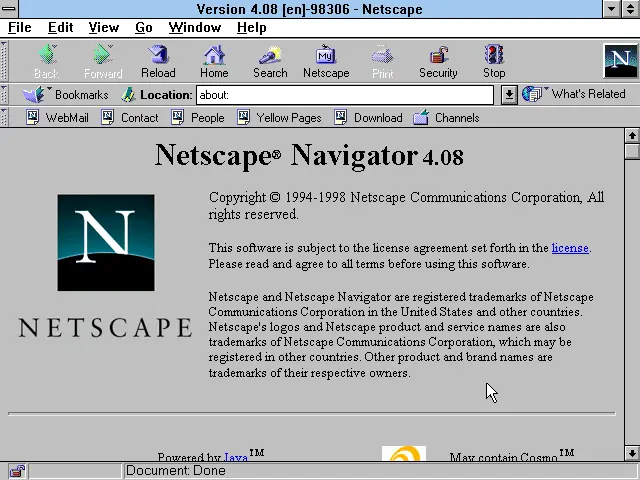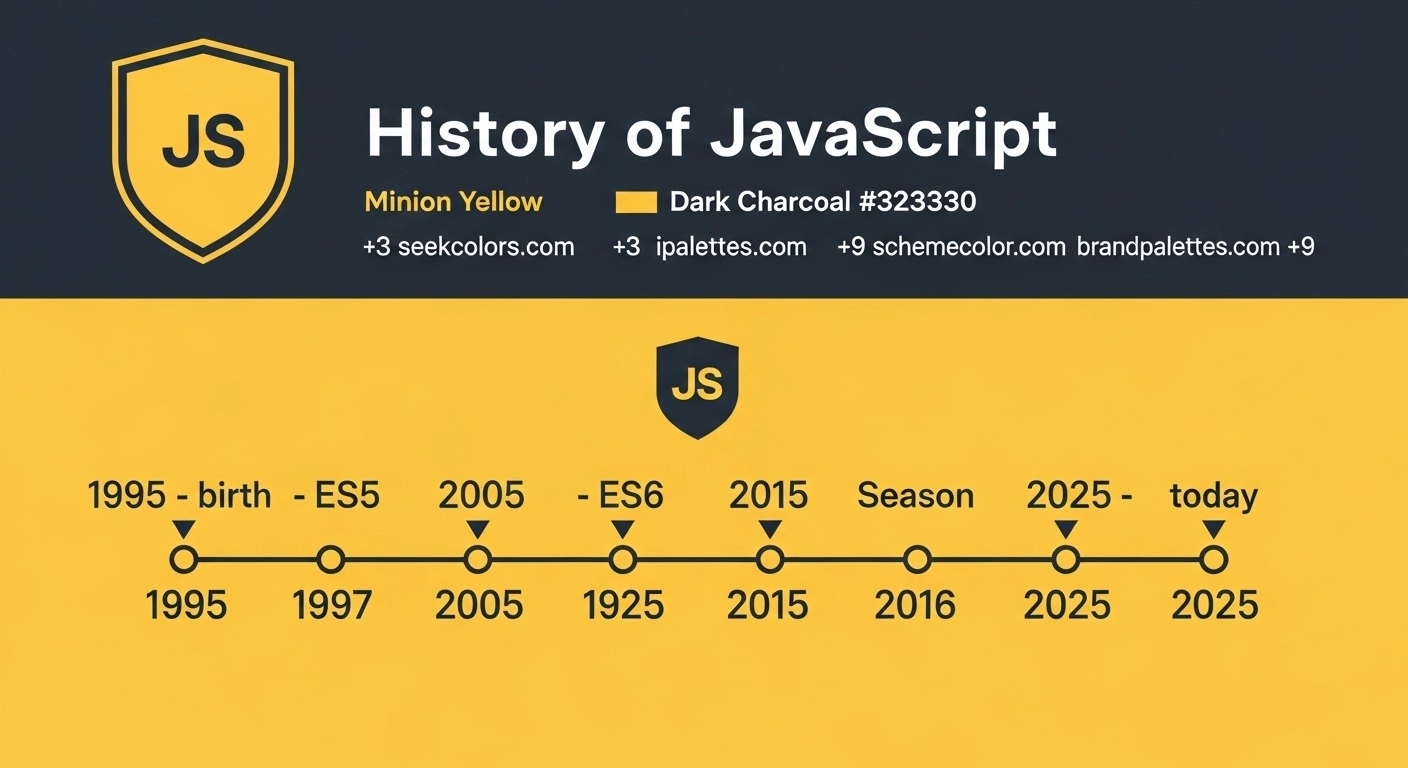🚀 What is JavaScript? JavaScript is a high-level, interpreted programming language that is one of the core technologies of the World Wide Web, alongside HTML and CSS. It is a dynamic, weakly typed, prototype-based language with first-class functions. JavaScript enables interactive web pages and is an essential part of web applications. It's also used for server-side development, mobile app development, desktop applications, and even IoT devices. 💻✨
🌐 Why JavaScript Runs Directly in Browser JavaScript was specifically designed to run directly in web browsers without requiring any additional software installation. Browsers come with built-in JavaScript engines (like V8 in Chrome, SpiderMonkey in Firefox, and JavaScriptCore in Safari) that can parse and execute JavaScript code immediately. This makes JavaScript uniquely suited for web development, as users don't need to install compilers or interpreters to run JavaScript applications. ⚡
⚙️ Why JavaScript Doesn't Need a Compiler or Interpreter JavaScript is an interpreted language, which means it doesn't need to be compiled into machine code before execution. Instead, the JavaScript engine in the browser reads and executes the code line by line in real-time. Modern JavaScript engines use Just-In-Time (JIT) compilation, which combines the benefits of interpretation and compilation by compiling frequently used code on-the-fly for better performance. This approach allows for rapid development and testing without the compilation step. 🔄

👨💻 Founder of JavaScript: Brendan Eich JavaScript was created by Brendan Eich, an American computer programmer and technology executive. At the time of JavaScript's creation in 1995, Eich was working at Netscape Communications Corporation. He later co-founded the Mozilla Foundation and served as the CEO of Mozilla Corporation. Eich also created the Mozilla Firefox web browser and has been a significant figure in web standards development. 🏆

⚡ Created in Just 10 Days One of the most remarkable aspects of JavaScript's origin story is that Brendan Eich created the entire language in just 10 days in May 1995. This incredibly short development time was due to the urgent need for a scripting language for Netscape Navigator 2.0. Despite this rushed timeline, the core concepts and design decisions made during those 10 days have remained fundamental to JavaScript throughout its evolution. 🏃♂️💨
📋 What is ECMAScript? ECMAScript is the official standard specification that defines the JavaScript programming language. It was created by the European Computer Manufacturers Association (ECMA) to standardize JavaScript implementations across different browsers and environments. ECMAScript defines the syntax, data types, statements, keywords, objects, and methods that JavaScript must support. 📊
🎯 JavaScript Standards Through ECMAScript ECMAScript serves as the blueprint for JavaScript implementations, ensuring consistency and compatibility across different platforms. Major browsers follow ECMAScript specifications to implement their JavaScript engines. The standardization process involves multiple stakeholders including browser vendors, developers, and technology companies who propose, discuss, and approve new features through the TC39 (Technical Committee 39) process. 🤝
📅 JavaScript History Timeline
• 1995: 🎉 Brendan Eich creates JavaScript at Netscape in 10 days
• 1996: 🏢 Microsoft releases JScript for Internet Explorer
• 1997: 📋 ECMAScript 1 standardized by ECMA
• 1998: 📝 ECMAScript 2 released
• 1999: 🔧 ECMAScript 3 introduces RegExp, try/catch
• 2005: 🚀 AJAX revolutionizes web development
• 2006: 💎 jQuery simplifies DOM manipulation
• 2008: ⚡ Google releases V8 engine in Chrome
• 2009: 🖥️ Node.js brings JavaScript to servers, ECMAScript 5 released
• 2010: 🅰️ AngularJS introduces MVC to client-side
• 2012: 📦 TypeScript adds static typing, Webpack debuts
• 2013: ⚛️ React introduces virtual DOM and components
• 2014: 💚 Vue.js launches with simplicity focus
• 2015: 🎯 ECMAScript 6/2015 modernizes JavaScript
• 2016: 🔄 Angular 2+ complete rewrite, Svelte debuts
• 2017: 📱 React Native enables mobile development
• 2018: 🦕 Deno project starts as Node.js alternative
• 2020: 🛠️ React Server Components, Vite build tool
• 2021: 🖼️ Next.js 11 introduces image optimization
• 2022: 🔀 React 18 with concurrent features
• 2023: 🏃♂️ Bun runtime challenges Node.js performance
• 2024: 🤖 AI integration in development tools
• 2025: 🔮 JavaScript continues evolving with annual ECMAScript releases
🎯 The Birth of JavaScript (1995) In the mid-1990s, the web was primarily static. Netscape Communications Corporation recognized the need for a scripting language that could make web pages interactive. Brendan Eich, a programmer at Netscape, was tasked with creating this language in just 10 days in May 1995. Initially called 'Mocha,' then 'LiveScript,' it was eventually renamed 'JavaScript' to capitalize on the popularity of Java, despite having very different design philosophies. 🚀
📚 Detailed Timeline Explanations:
🎉 1995 - JavaScript Creation: Brendan Eich created JavaScript in just 10 days at Netscape Communications. The language was initially designed to make web pages more dynamic and interactive. Despite its rushed development, JavaScript incorporated concepts from multiple programming paradigms including functional programming, object-oriented programming, and prototype-based inheritance. The name 'JavaScript' was chosen for marketing reasons to ride on Java's popularity, even though the two languages are fundamentally different. 💡
🏢 1996 - Microsoft JScript: Microsoft responded to JavaScript's success by creating JScript for Internet Explorer 3.0. JScript was largely compatible with JavaScript but included Microsoft-specific extensions and features. This marked the beginning of browser-specific implementations that would plague web development for years, as developers had to write different code for different browsers. ⚔️
📋 1997 - ECMAScript 1 Standardization: To address growing compatibility issues between different JavaScript implementations, Netscape submitted JavaScript to ECMA International for standardization. ECMAScript 1 (ECMA-262) was published in June 1997, establishing the first official standard for the language. This standardization was crucial for ensuring that JavaScript code could work consistently across different browsers and platforms. 🎯
📝 1998 - ECMAScript 2: ECMAScript 2 was released as a minor update to align the ECMA-262 specification with the ISO/IEC 16262 international standard. This version included editorial changes and clarifications but no new features. It demonstrated the standards body's commitment to maintaining and improving the JavaScript specification. 🔧
🔧 1999 - ECMAScript 3 Major Features: ECMAScript 3 introduced significant features that would define JavaScript for the next decade. Key additions included regular expressions for pattern matching, try/catch statements for error handling, better string handling, and more robust number formatting. This version became the foundation for JavaScript development until ECMAScript 5 was released in 2009. 🏗️
🚀 2005 - AJAX Revolution: The introduction of AJAX (Asynchronous JavaScript and XML) technology revolutionized web development. Google's Gmail and Google Maps demonstrated that web applications could be as responsive and feature-rich as desktop applications. AJAX allowed web pages to exchange data with servers asynchronously without requiring full page reloads, ushering in the era of dynamic web applications. 🌐
💎 2006 - jQuery Library: John Resig released jQuery with the motto 'Write less, do more.' jQuery simplified DOM manipulation, event handling, and AJAX requests while providing cross-browser compatibility. It became the most popular JavaScript library, democratizing JavaScript development and making it accessible to designers and developers with varying skill levels. ✨
⚡ 2008 - Google V8 Engine: Google's V8 JavaScript engine, launched with Chrome, dramatically improved JavaScript performance through just-in-time compilation. V8 proved that JavaScript could execute complex applications efficiently, challenging the perception that JavaScript was only suitable for simple scripts. This performance breakthrough enabled JavaScript's expansion beyond browsers. 🏃♂️
🖥️ 2009 - Node.js and ECMAScript 5: Ryan Dahl created Node.js, bringing JavaScript to server-side development using the V8 engine. This allowed developers to use JavaScript for full-stack development. Simultaneously, ECMAScript 5 was released after a 10-year gap, introducing strict mode, JSON support, and numerous array methods that modernized JavaScript development. 🌟
🅰️ 2010 - AngularJS Framework: Google released AngularJS, introducing Model-View-Controller (MVC) architecture to client-side development. AngularJS popularized concepts like two-way data binding, dependency injection, and declarative templates. It demonstrated that JavaScript could power large-scale, maintainable applications and influenced the design of many subsequent frameworks. 🏛️
📦 2012 - TypeScript and Webpack: Microsoft introduced TypeScript, adding static type checking to JavaScript for better error detection and code maintenance in large applications. Webpack emerged as a powerful module bundler, enabling sophisticated build processes and asset management. These tools addressed the growing complexity of JavaScript applications. 🛠️
⚛️ 2013 - React Library: Facebook released React, introducing a component-based architecture and virtual DOM for efficient UI updates. React's declarative approach and one-way data flow solved many problems that plagued earlier frameworks. Its emphasis on reusable components and functional programming concepts influenced the entire JavaScript ecosystem. 🔄
💚 2014 - Vue.js Framework: Evan You created Vue.js, focusing on simplicity and flexibility. Vue combined the best aspects of Angular and React while maintaining a gentle learning curve. Its progressive adoption approach allowed developers to integrate Vue into existing projects incrementally, making it popular for both new and legacy applications. 🌱
🎯 2015 - ECMAScript 6/2015: ES6 was a watershed moment, introducing transformative features like arrow functions, classes, modules, template literals, destructuring, and promises. This version modernized JavaScript syntax and capabilities, making it more suitable for large-scale development. ES6 marked the beginning of annual ECMAScript releases. 🎉
🔄 2016 - Angular 2+ and Svelte: Angular received a complete rewrite as Angular 2+, built with TypeScript and modern development practices. Rich Harris introduced Svelte, which moved much of the framework work to compile time, producing smaller and faster applications. Both frameworks pushed the boundaries of what was possible with JavaScript frameworks. 🚧
📱 2017 - React Native Mobile: Facebook expanded React to mobile development with React Native, allowing developers to build native mobile apps using JavaScript and React. This marked JavaScript's significant entry into mobile app development, competing with native development approaches and hybrid solutions. 📲
🦕 2018 - Deno Alternative: Ryan Dahl announced Deno as a modern alternative to Node.js, addressing design decisions he regretted in Node.js. Deno featured TypeScript support out of the box, improved security model, and modern JavaScript features. While not replacing Node.js, Deno demonstrated continued innovation in JavaScript runtimes. 🔒
🛠️ 2020 - React Server Components and Vite: React introduced Server Components for better server-side rendering and client-side interactivity balance. Evan You released Vite, a fast build tool leveraging ES modules for near-instantaneous development server startup. These innovations addressed performance and developer experience concerns. ⚡
🖼️ 2021 - Next.js 11 Optimizations: Vercel's Next.js 11 introduced automatic image optimization, script optimization, and improved developer experience features. Next.js established itself as the leading React framework for production applications, showcasing the maturity of the JavaScript ecosystem for enterprise development. 🏢
🔀 2022 - React 18 Concurrent Features: React 18 introduced concurrent features like automatic batching, transitions, and Suspense improvements. These features enabled better user experiences through improved performance and responsiveness, demonstrating JavaScript's continued evolution toward more sophisticated application development. 🎭
🏃♂️ 2023 - Bun Runtime Performance: Jarred Sumner released Bun, a fast all-in-one JavaScript runtime that aims to replace Node.js, npm, and bundlers with a single fast tool written in Zig. Bun showcased dramatic performance improvements in JavaScript tooling, spurring competition and innovation in the runtime space. 💨
🤖 2024 - AI Integration in Development: JavaScript development tools began integrating AI assistance for code generation, debugging, and optimization. Tools like GitHub Copilot, ChatGPT, and specialized JavaScript AI assistants transformed how developers write and debug code, making JavaScript development more accessible and efficient. 🧠
🔮 2025 - Continued Evolution: JavaScript continues its annual release cycle with new ECMAScript features, while the ecosystem matures with better tooling, performance improvements, and expanding use cases. The language maintains its position as the most popular programming language while adapting to emerging technologies like WebAssembly, edge computing, and AI integration. 🌟
⚔️ The Browser Wars Era (1995-2001) JavaScript's early years were marked by the infamous 'Browser Wars' between Netscape Navigator and Microsoft Internet Explorer. Microsoft created their own version called 'JScript' for Internet Explorer 3.0 in 1996, leading to compatibility issues and fragmentation. This period saw rapid but inconsistent development, with each browser implementing its own extensions and interpretations of the language. 🌐
📋 ECMAScript Standardization (1997-1999) To address the growing chaos of incompatible implementations, Netscape submitted JavaScript to the European Computer Manufacturers Association (ECMA) for standardization. In June 1997, ECMAScript 1 (ES1) was published as ECMA-262, providing the first official standard for JavaScript. ES2 followed in 1998 with minor changes, and ES3 in 1999 introduced regular expressions, try/catch statements, and other crucial features that would define JavaScript for the next decade. 🎯
🌑 The Dark Ages (2000-2005) Following the dot-com crash and the end of the Browser Wars, JavaScript development stagnated. Many developers viewed it as a 'toy language' suitable only for simple animations and form validation. The language suffered from performance issues, limited capabilities, and a reputation for being difficult to debug. During this period, server-side technologies like PHP, ASP, and JSP dominated web development. 😔
🚀 The AJAX Revolution (2005) Everything changed with the introduction of AJAX (Asynchronous JavaScript and XML). Google's Gmail and Google Maps demonstrated that JavaScript could power sophisticated, desktop-like applications in the browser. This marked the beginning of the 'Web 2.0' era, where JavaScript transformed from a simple scripting language into a powerful tool for building interactive web applications. 🌟
💎 The jQuery Era (2006-2010) John Resig released jQuery in 2006, revolutionizing how developers interacted with the DOM. With its famous motto 'Write less, do more,' jQuery simplified JavaScript development and provided cross-browser compatibility. It became the most popular JavaScript library, used by millions of websites and serving as many developers' introduction to JavaScript programming. ✨
⚡ The V8 Engine and Performance Revolution (2008) Google's release of the V8 JavaScript engine in Chrome marked a pivotal moment. V8's just-in-time compilation made JavaScript execution significantly faster, proving that the language could handle complex applications. This performance boost laid the foundation for JavaScript's expansion beyond the browser. 🏃♂️
🖥️ Server-Side JavaScript: Node.js (2009) Ryan Dahl created Node.js, bringing JavaScript to the server side using the V8 engine. This breakthrough allowed developers to use JavaScript for full-stack development, leading to the rise of the 'JavaScript everywhere' philosophy. Node.js introduced an event-driven, non-blocking I/O model that made it ideal for building scalable network applications. 🌐
📈 ECMAScript 5 and Modern JavaScript (2009-2011) After a decade of stagnation, ECMAScript 5 was released in 2009, introducing strict mode, JSON support, and numerous array methods. This version marked the beginning of modern JavaScript development, providing developers with more robust tools and better error handling. 🛠️
🏛️ The Framework Wars (2010-2015) The early 2010s saw an explosion of JavaScript frameworks and libraries. Backbone.js (2010) introduced MVC patterns to client-side development. AngularJS (2010) by Google brought two-way data binding and dependency injection. Ember.js (2011) focused on convention over configuration. These frameworks established patterns and principles that would influence JavaScript development for years to come. ⚔️
🎯 ECMAScript 6/2015: The Modern Era Begins ES6 (also known as ES2015) was a watershed moment for JavaScript. Released in 2015, it introduced transformative features like arrow functions, classes, modules, template literals, destructuring, and promises. This version modernized JavaScript syntax and capabilities, making it more suitable for large-scale application development. 🎉
⚛️ The React Revolution (2013-Present) Facebook's React library, introduced in 2013, revolutionized front-end development with its component-based architecture and virtual DOM. React's declarative approach and one-way data flow solved many problems that plagued earlier frameworks, leading to widespread adoption and influencing the design of subsequent frameworks. 🔄
🛠️ Build Tools and Modern Development (2010-Present) The JavaScript ecosystem exploded with sophisticated build tools and development workflows. Grunt (2012), Gulp (2013), Webpack (2012), and later Vite (2020) transformed how developers build and deploy JavaScript applications. These tools enabled advanced features like module bundling, code splitting, and tree shaking. 📦
📊 TypeScript and Type Safety (2012-Present) Microsoft's TypeScript, released in 2012, added static type checking to JavaScript. As applications grew larger and more complex, TypeScript's type safety became increasingly valuable, leading to widespread adoption in enterprise development and large-scale projects. 🔒
🌟 The Modern Framework Era (2014-Present) Vue.js (2014) brought simplicity and flexibility to component-based development. Angular (2016) completely rewrote AngularJS with TypeScript and modern concepts. Svelte (2016) introduced compile-time optimizations. These frameworks, along with React, form the foundation of modern front-end development. 🏗️
📅 Annual ECMAScript Releases (2015-Present) Since ES2015, JavaScript has followed an annual release cycle. Each year brings new features and improvements: ES2016 (Array.includes, exponentiation operator), ES2017 (async/await, Object.entries), ES2018 (rest/spread for objects), ES2019 (Array.flat, optional catch binding), ES2020 (optional chaining, nullish coalescing), ES2021 (logical assignment operators), ES2022 (class fields, top-level await), ES2023 (Array.findLast, hashbang support), and ES2024 (temporal API, decorators). 🔄
🌍 JavaScript Everywhere (2015-Present) JavaScript has expanded far beyond web browsers. It now powers mobile apps (React Native, Ionic), desktop applications (Electron), IoT devices, serverless functions, and even machine learning applications. This ubiquity has made JavaScript one of the most versatile and widely-used programming languages in the world. 📱💻🤖
🚀 The Current State and Future (2020-Present) Today, JavaScript is the most popular programming language according to Stack Overflow surveys. The ecosystem continues to evolve with new frameworks like Next.js, Nuxt.js, and SvelteKit providing full-stack solutions. WebAssembly integration, improved performance, and better developer tooling continue to push JavaScript's boundaries. 🌟
🎊 Conclusion From its humble beginnings as a simple scripting language created in 10 days to becoming the backbone of modern web development, JavaScript's journey has been remarkable. Its evolution reflects the changing needs of the web and the creativity of its community. As we look to the future, JavaScript continues to adapt and grow, cementing its position as one of the most important technologies in software development. 🌟🚀

